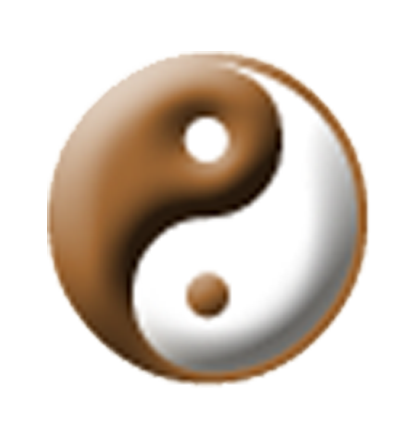Wudang Martial Arts
The Wudang martial arts are an orthodox school of Chinese Gongfu. The main component of the Wudang martial arts is Wudang taijiquan. Wudang taijiquan has developed from its simple beginnings of five elements, eight methods, and thirteen postures into many different schools.
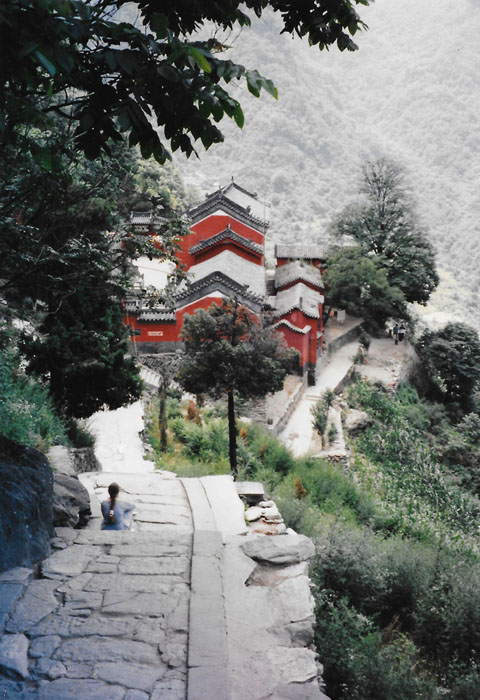
Wudang Taiji is named after the Wudang Mountains
The Wudang Mountains have been outstanding in the martial arts; one is indispensable to the other. It is said that Lu Dongbin (one of the eight gods) and Zhang Sanfeng (a famous Taoist priest) cultivated themselves there. Wang Zongyue is said to have studied with Zhang Sanfeng at Wudang. His Treatise on Taijiquan is among the principle foundation documents on the philosophy of taijiquan practice as is Zhang Sanfeng’s Treatise on Taijiquan.
In modern times, some of the traditional forms have been altered and other arts developed so that the martial arts from Wudang have become more diverse as have those who practice them. The name “wudang” has been used to refer to any practice that relies on principles founded in traditional daoist arts.
However, there remain traditional forms and teachings which have been handed down directly from teacher to student through many generations and many teachers. These old forms represent the traditional arts from the Wudang school.
One branch of these traditional arts was inherited by Professor Yuzeng Liu from his teacher, Wang Xixiao, a respected elder from Wudangshan. Grandmaster Liu’s student, Terri Morgan, brought these traditional teachings to the United States in 1991.
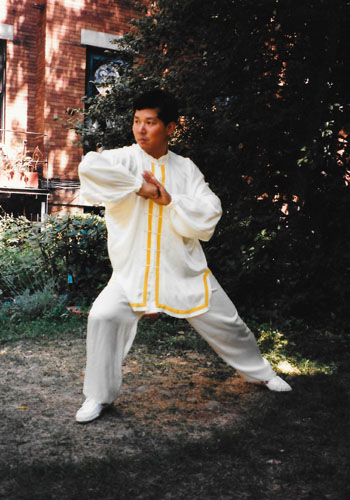
Wudang Taijiquan
Wudang Taijiquan highly stresses the fullness of internal energy, breath, and spirit. The eight criteria that Wudang Taijiquan stresses when playing are: lightness, easiness, roundness, evenness, flexibility, changeableness, steadiness and precision.
The motto for practice is: Be relaxed, complete, prompt, and sudden. The peculiar principles of Wudang Taiji are to be hard and strong inside, round and smooth outside and to strike out quickly, so quickly the opponent does not notice.
Move like waves of the Yangzi River flowing to the ocean, one after another, never stopping.
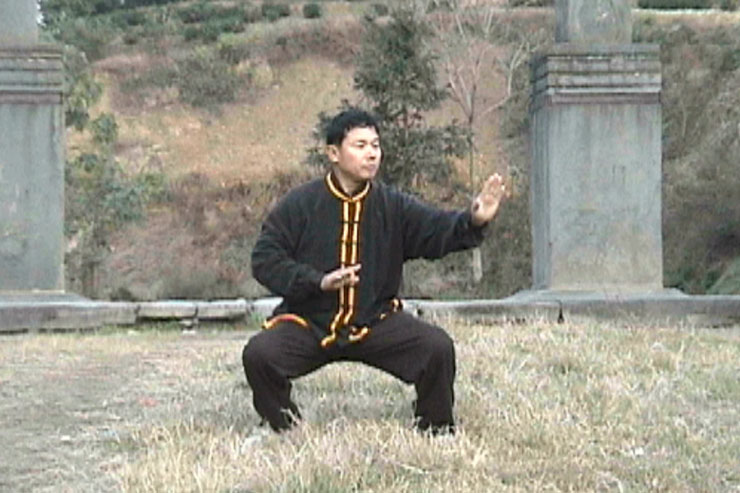
Wudang Qigong
In practicing Wudang Qigong, the first step is to move the inner breath in the small heavenly circle; this is also known as the first gate and is called refining the energy and transforming the breath. Together energy, breath, and spirit become spirit breath. The second step is to move the inner breath in the large heavenly circle; this is known as the middle gate and is called refining the breath and transforming the spirit. Together spirit and breath become spirit. The third step is combining ten thousand things into an integral whole; this is known as refining the spirit and returning to the void. Recover and return to emptiness, understand the heart; see the character, make the body stronger, and prolong the years.
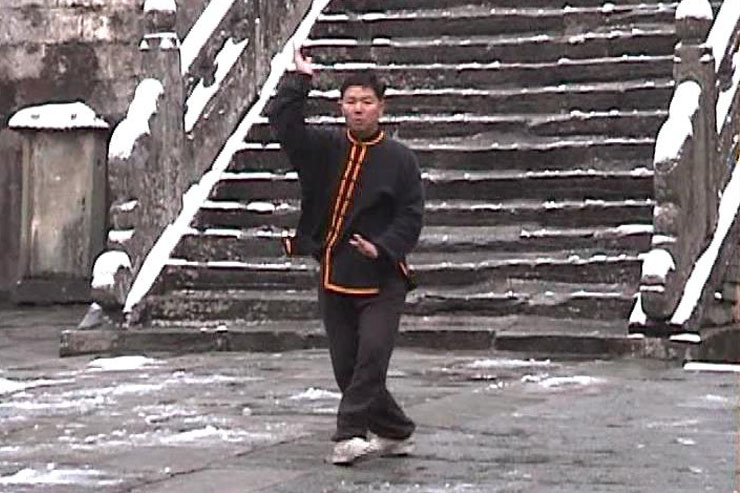
Wudang Taiyi
Wudang Taiyi uses the internal energy from the dan tian to drive it’s complex movements. But while this traditional Wudang martial arts form appears rather short with only 23 named movements, it is not an easy form to learn nor to master.
With multiple direction changes, circular patterns, and hidden techniques, even the basic practice is challenging.
Wudang Taiji Sword
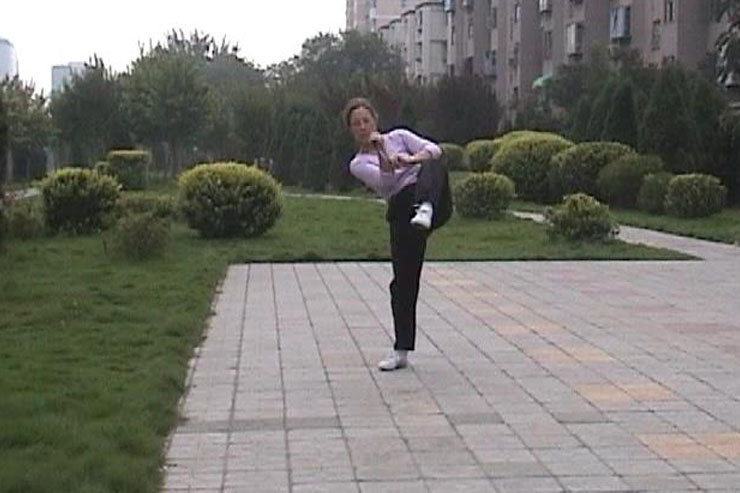
Following the principles and practice of Wudang Taiji, Wudang Taiji Sword includes 36 named movements. As in taiji, the whole body is required to be well coordinated above and below, to stand up straight, to be firm and comfortable, able to support movements in all directions. One basic requirement for the movements is that once the intention and breathing are ignited, all the limbs move.
This is like a tree – if one branch is shaken, all the others respond. When extending the sword, the energy must extend through the tip of the sword. Slice, thrust, parry according to the requirements of the form, always paying attention to the blade and the tip. Control of the sword comes through the wrist, but the waist drives the movement, and the qi (breath) drives the waist, filling the whole body.
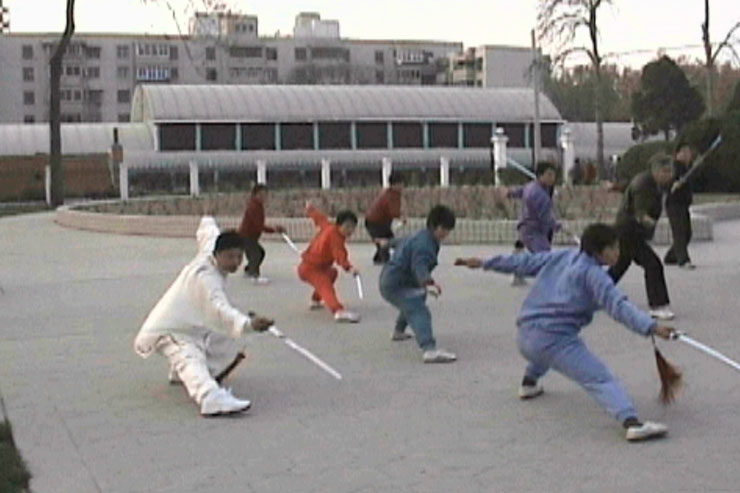
Wudang Dragon Sword
Long Hua Jian (Dragon becomes a Sword) is an apt name for this traditional Wudang martial arts sword form. The 18 movements are quick, agile, and full of spirit like the movements of a dragon. The fundamentals of internal practice are tested with the dynamic changes and applications of the Dragon Sword. It requires both internal workmanship and external flexibility.
